A rather lazy locust utilizes the scaly back of a flap-necked chameleon to cross a busy road in the Pilanesberg nature reserve. Is a ride all he wanted, or was there more to it?
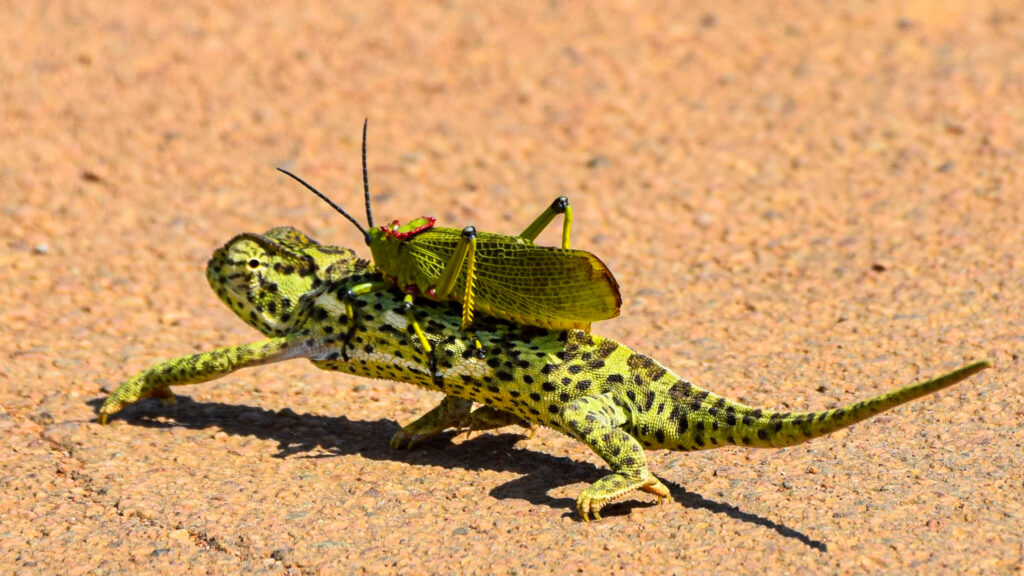
19-year-old human physiology student Sohara Naidoo shared a moment that was special to her with LatestSightings.com.
” We were driving up Kubu Drive and just crossed Wimbledon Bridge; we hadn’t seen much of the bigger animals that day besides the general game and a couple of elephants. As we drove up from the bridge, I noticed something in the road and veered to the side.”
Chameleon Caught Helping Lazy Locust Cross the Road
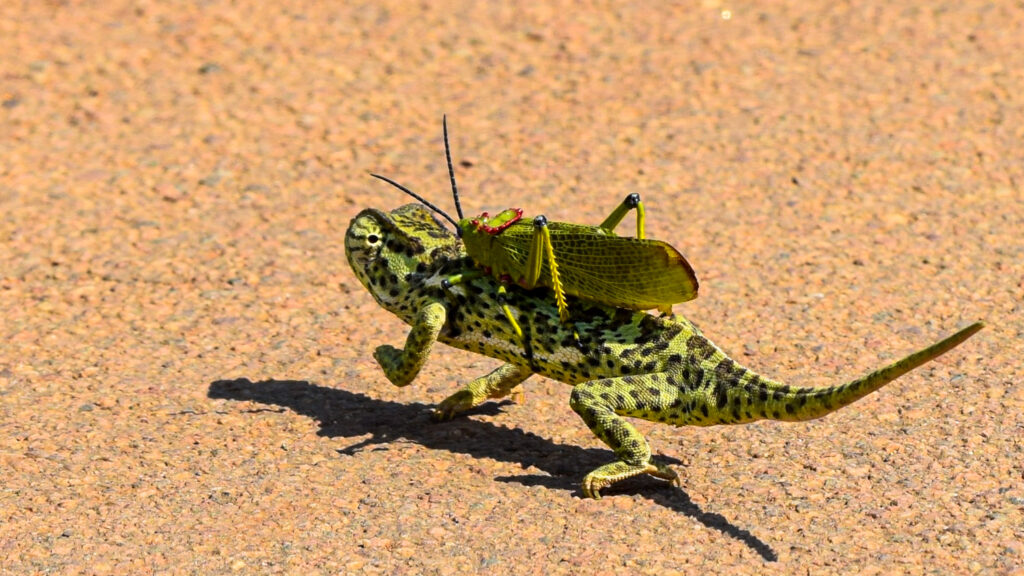
“This was my first chameleon sighting, so I was overjoyed! Once we picked up our camera to take a photo, we noticed the chameleon had something on its back. It was a locust! That was very amusing to see as the relationship between a chameleon and a locust is definitely a predator-prey one.”
Chameleons are, for the most part, insectivorous. This means they will feed on small insects, beetles, and definitely locusts. Perhaps this little guy ordered his food to go? Seeing a locust on the chameleon’s back is something rare, and that is exactly why we should always focus on the smaller things in the bush.
Chameleons Caught Mating in the Road!
Another wildlife enthusiast also captured some incredibly rare images of two chameleons mating! Elaine De Klerk shared these images of mating chameleons she saw in the Kruger National Park.
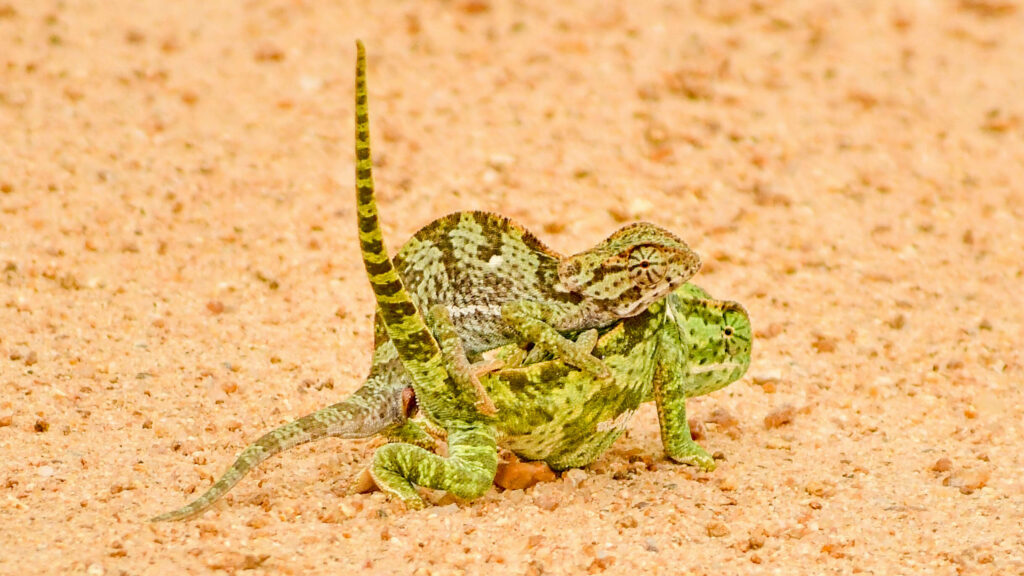
Have you witnessed something incredible while on safari? Share your footage and stories with the Latest Sightings Film and Earn and get featured.
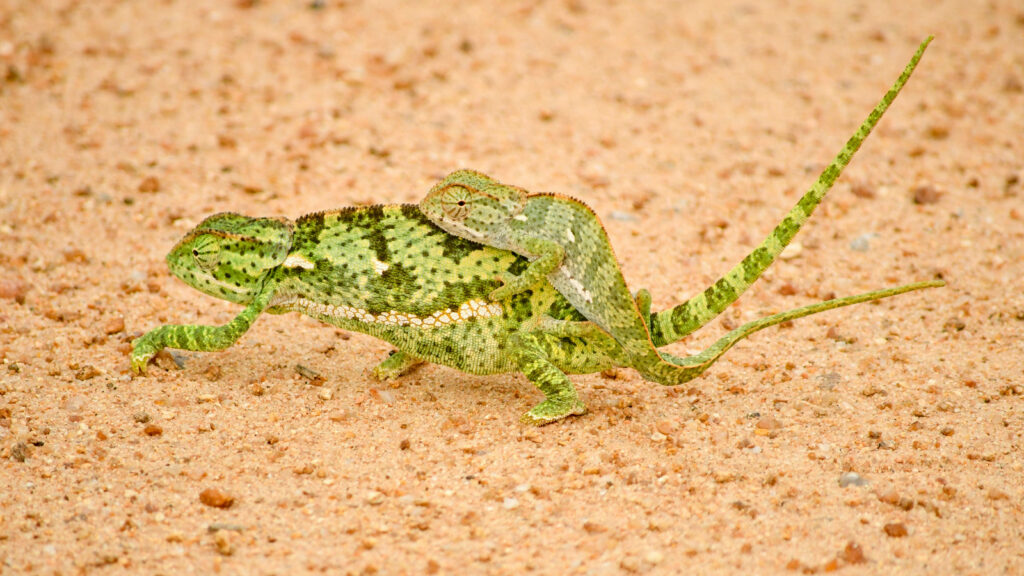
Chameleons are generally very well hidden and camouflaged, so seeing one is always a special sight, however, seeing two mating is just purely incredible! Once chameleons mate like all reptiles the female will lay eggs. She will find a suitable piece of ground to dig up and lay her eggs safely into the soil. The eggs will self-incubate for a period of 10-12 months after which the eggs will hatch, and many little chameleons will now be born.
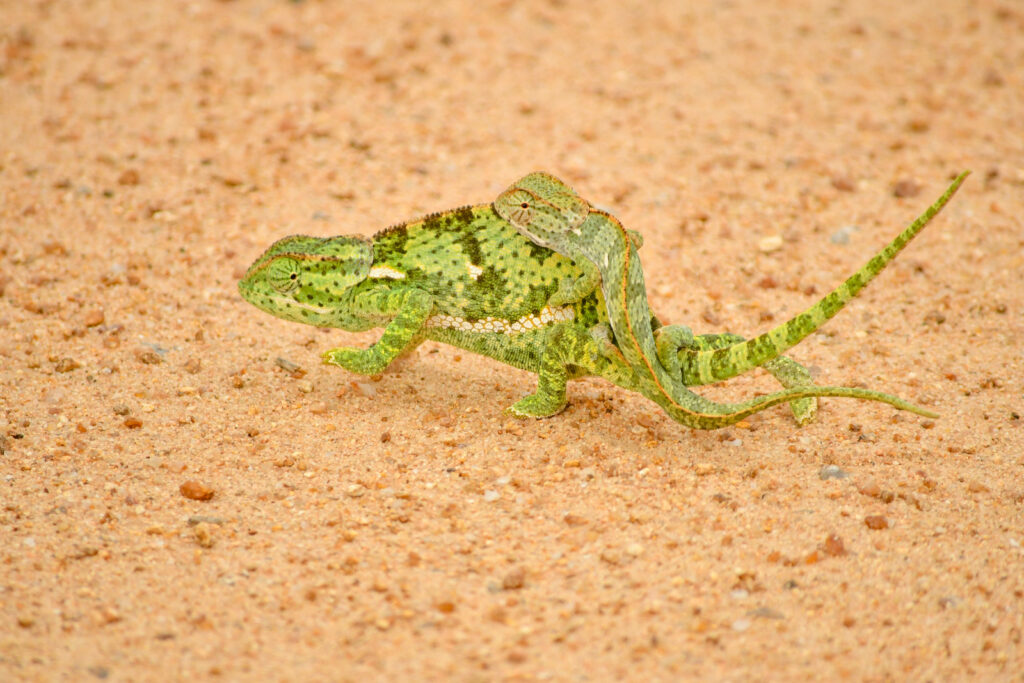
Both Sohara and Elaine had never seen sightings like these before. How fortunate to have witnessed something so unique! Unfortunately, when chameleons crossroads in national parks, they are not always as fortunate as this one, which had a watchful eye over it as it crossed. Chameleons fall prey to many bird species when out in the open. At times, it’s not the birds that kill them but speeding motorists who are not observant enough to notice their small presence.

